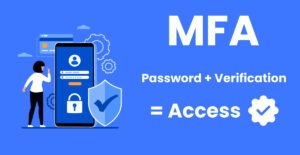
In the annals of cybersecurity, few names are as legendary—or as unsettling—as Stuxnet. This piece of malware, often hailed as the world’s first true digital weapon, didn’t just represent a new level of sophistication in cyber attacks; it was a geopolitical statement, a technical masterpiece, and a harbinger of the future of warfare. In this post, we’ll explore the origins of Stuxnet, delve into the technical intricacies that made it so effective, and examine the far-reaching consequences of its deployment.
The Origins of Stuxnet
The mid-2000s were a time of growing concern over Iran’s nuclear ambitions. As the country pressed forward with its uranium enrichment program, the international community—particularly the United States and Israel—faced a dilemma. Traditional military intervention carried the risk of significant escalation, so these nations turned to an innovative solution: cyber warfare.
Stuxnet was the result of this strategy. Though neither the U.S. nor Israel has officially claimed responsibility, cybersecurity experts widely believe the malware was a joint effort between these two nations. The goal was clear: to sabotage Iran’s nuclear program, specifically its uranium enrichment efforts, without resorting to conventional military action.
The Technical Marvel: How Stuxnet Worked
Stuxnet was no ordinary virus. It was a highly sophisticated worm designed with surgical precision to target a very specific set of systems: the Siemens Step7 software running on programmable logic controllers (PLCs) used in Iran’s Natanz nuclear facility. These PLCs were responsible for controlling the centrifuges that enriched uranium—a critical process in developing nuclear weapons.
Here’s how Stuxnet achieved its objective:
Zero-Day Exploits
Stuxnet utilized four zero-day vulnerabilities—previously unknown security flaws in software that had no existing patches. Zero-days are incredibly valuable because they can bypass even the most up-to-date security defenses. Stuxnet’s use of multiple zero-days underscored its sophistication and the resources behind its development
Propagation
Stuxnet was designed to spread through Windows-based networks via infected USB drives—a method that allowed it to bridge the so-called “airgap.” An airgap is a security measure where a computer or network is physically isolated from unsecured networks, such as the internet. This isolation makes it incredibly difficult to directly hack into such systems. However, Stuxnet overcame this by leveraging its USB propagation technique, spreading to computers that were not connected to the internet but had USB ports.
Targeting Specific Systems
Once inside a network, Stuxnet lay dormant, scanning for a very specific configuration: Siemens PLCs connected to Step7 software. If it didn’t find these systems, it would remain inactive, reducing the likelihood of detection. If it did find its target, Stuxnet would deploy its payload.
Payload Activation
Stuxnet’s payload was a series of code injections into the PLCs controlling the centrifuges. The worm altered the PLCs’ instructions to subtly modify the centrifuge speeds—causing them to spin at higher or lower speeds than their operational limits. This variation led to excessive wear and tear, eventually causing the centrifuges to fail. To cover its tracks, Stuxnet also fed false data back to the monitoring systems, making it appear as though everything was operating normally.
Bridging the Airgap
The most impressive aspect of Stuxnet was its ability to reach isolated systems. Infected USB drives were the primary method of transmission across the airgap, but Stuxnet’s designers also accounted for scenarios where the worm might spread to other, non-critical systems. By ensuring that the malware was virtually undetectable on non-target machines, the creators minimized the risk of early discovery, allowing the worm to spread widely before reaching its ultimate target.
Self-Destruction
To avoid detection, Stuxnet was programmed with a kill date—a time after which it would cease to function. This self-destruction mechanism was crucial for reducing the likelihood of reverse engineering and detection after it had completed its mission.
The Effects: Disruption on an Unprecedented Scale
Stuxnet’s impact on Iran’s nuclear program was significant. The malware is believed to have destroyed nearly 1,000 centrifuges at the Natanz facility, setting back Iran’s nuclear ambitions by several years. This was a major achievement, especially considering that no bombs were dropped and no soldiers were deployed.
However, the effects of Stuxnet were not confined to Iran. As the worm spread, it began to infect computers worldwide. While it was designed to target very specific industrial systems, its discovery by cybersecurity experts in 2010 sent shockwaves through the global cybersecurity community. The world had just witnessed the first digital weapon capable of causing physical destruction—a development that fundamentally changed the nature of cyber warfare.
The Aftermath: A New Era of Cyber Warfare
The discovery of Stuxnet by the Belarusian cybersecurity firm VirusBlokAda marked a turning point. This was not just another piece of malware; it was a weapon, and its implications were profound.
- Global Awareness: The exposure of Stuxnet raised global awareness about the potential for cyber attacks to cause physical damage. It wasn’t just about stealing data or disrupting services anymore—critical infrastructure could be destroyed without a single shot being fired.
- Iran’s Response: For Iran, Stuxnet was a wake-up call. The country accelerated its efforts to bolster its cyber defenses and develop its own offensive cyber capabilities. This led to the emergence of Iranian cyber groups that have been implicated in various cyber attacks over the years.
- Cybersecurity Arms Race: Stuxnet’s revelation ignited a cybersecurity arms race. Nations around the world began investing heavily in both defensive and offensive cyber capabilities. The U.S. established Cyber Command, and other countries followed suit, recognizing that cyberspace had become the new frontier for conflict.
- Copycat Attacks: Stuxnet also inspired a new wave of malware. The techniques used in Stuxnet were later seen in other high-profile attacks, such as the 2015 and 2016 attacks on Ukraine’s power grid and the 2014 Sony Pictures hack. These incidents demonstrated how the line between cyber crime and cyber warfare was becoming increasingly blurred.
- Ethical and Legal Questions: The use of Stuxnet raised numerous ethical and legal questions. Was it justified to deploy a cyber weapon of this scale? What are the rules of engagement in cyberspace? How should international law address the use of cyber weapons? These questions are still being debated today as nations grapple with the implications of cyber warfare.
The Legacy of Stuxnet
Stuxnet’s legacy is one of both awe and caution. On the one hand, it demonstrated the incredible capabilities of cyber weapons. On the other, it highlighted the dangers of unleashing such tools. Once a piece of malware like Stuxnet is released into the wild, controlling its spread and impact becomes nearly impossible.
The technical achievements of Stuxnet were remarkable. Its creators demonstrated a deep understanding of both the target systems and the broader cyber environment. The ability to bridge the airgap, target specific PLCs, and manipulate them without detection was a testament to the sophistication and resources behind its development.
However, the story of Stuxnet is also a cautionary tale. It opened Pandora’s box, showing the world just how vulnerable critical infrastructure could be to cyber attacks. It also set a precedent for the use of cyber weapons in statecraft, a trend that has only grown in the years since.
Conclusion: The Future of Cyber Warfare
As we look to the future, the lessons of Stuxnet are more relevant than ever. Cybersecurity is now a top priority for governments, businesses, and individuals alike. The stakes have never been higher, and the line between peace and conflict in cyberspace is increasingly blurred.
Stuxnet may have been the first digital weapon of its kind, but it won’t be the last. The challenge for the global community is to navigate this new era of warfare with caution, ensuring that the power of cyber weapons is understood and controlled before it’s too late.
In the end, the story of Stuxnet is a reminder of the double-edged sword that is technology. While it has the potential to drive progress and innovation, it also has the power to disrupt, destroy, and reshape the world in ways we are only beginning to understand.
For an assessment of your network cyber security profile, Please contact us!


